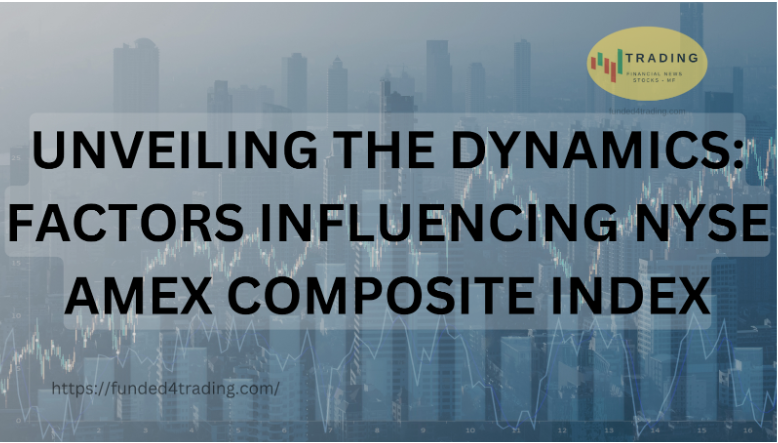Introduction:
The NYSE AMEX Composite Index, a vital benchmark for tracking the performance of small and mid-cap stocks, stands as a testament to the intricate interplay of various factors within the financial markets. Investors and analysts keenly observe the index for insights into economic trends and potential investment opportunities. In this blog, we delve into the factors that exert influence over the NYSE AMEX Composite Index, shedding light on the complex dynamics that drive its fluctuations.
1. Economic Indicators:
One of the primary determinants of the NYSE AMEX Composite Index is the overall health of the economy. Key economic indicators, such as GDP growth, employment rates, and consumer spending, play a pivotal role. A robust economy tends to propel the index upward as businesses thrive, leading to increased stock prices.
2. Interest Rates:
The Federal Reserve’s monetary policy, particularly changes in interest rates, has a profound impact on the NYSE AMEX Composite Index. Lower interest rates stimulate economic activity by making borrowing more affordable, encouraging investment and spending. Conversely, higher interest rates can cool down economic growth and dampen stock prices.
3. Corporate Earnings:
As the backbone of stock valuation, corporate earnings wield significant influence over the NYSE AMEX Composite Index. Positive earnings reports from listed companies often result in a surge in stock prices, thereby contributing to an upward momentum in the index. Conversely, disappointing earnings can trigger a downturn.
4. Market Sentiment and Investor Confidence:
The intangible but powerful force of market sentiment significantly impacts the index. Investor confidence, shaped by geopolitical events, global economic conditions, and overall market perception, can lead to rapid shifts in the NYSE AMEX Composite Index. A sudden loss of confidence may result in widespread selling, causing the index to dip.
5. Political and Geopolitical Events:
The NYSE AMEX Composite Index is not immune to the impact of political and geopolitical developments. Elections, policy changes, and international conflicts can create uncertainty in the markets, affecting investor behavior and influencing the index. Investors often react to geopolitical events by adjusting their portfolios, leading to fluctuations in the index.
6. Sector-Specific Performance:
The composition of the NYSE AMEX Composite Index includes a diverse array of sectors. The performance of individual sectors, influenced by factors unique to each industry, collectively contributes to the overall index movement. Changes in technology, energy, healthcare, and other sectors can have a cascading effect on the index.
7. Market Liquidity:
The ease with which stocks can be bought or sold, known as market liquidity, is a critical factor influencing the NYSE AMEX Composite Index. High liquidity generally leads to smoother market functioning and more stable index movements. On the other hand, low liquidity can result in sharp price swings and increased volatility.
8. Global Economic Conditions:
In an interconnected global economy, events in one part of the world can reverberate across financial markets. The NYSE AMEX Composite Index is not isolated from the impact of global economic conditions, such as trade tensions, currency fluctuations, and economic slowdowns in major economies.
Conclusion:
The NYSE AMEX Composite Index is a complex entity shaped by a myriad of factors. Investors and analysts must navigate a dynamic landscape, considering economic indicators, interest rates, corporate earnings, market sentiment, political events, sector-specific performance, market liquidity, and global economic conditions. As the index continues to be a barometer of market health, a deep understanding of these factors is essential for making informed investment decisions in the ever-evolving world of finance.

